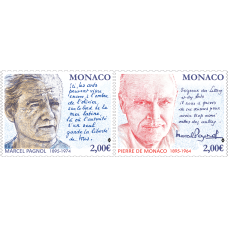Votre panier est vide !
Né à Clermont-Ferrand le 19 juin 1623, Blaise Pascal a été éduqué par son père après le décès de sa mère alors qu’il n’avait que trois ans. Enfant précoce, il écrit à l’âge de 16 ans un Essai sur les coniques et achève sa pascaline en 1645. En mathématiques, sa théorie des probabilités et son « Traité du triangle arithmétique » sont devenus célèbres. Son travail sera d'une grande valeur pour le futur des statistiques. En physique, Pascal écrit un traité sur le vide, invente la presse hydraulique, et perfectionne le baromètre de Torricelli. En 1654, après avoir frôlé la mort dans un accident de voiture et vécu une expérience mystique, Pascal décide de se consacrer à Dieu et à la religion. Il élabore les principes de sa doctrine philosophique centrée sur l'opposition des deux éléments fondamentaux de la connaissance : d'une part, la raison avec ses médiations qui tendent vers l'exactitude et la logique, et, d’autre part, le cœur, intuitif, capable d'apprendre l'ineffable, le religieux et le moral. Les conceptions de Pascal sont rassemblées dans les ouvrages Les Provinciales (1656-1657), un ensemble de 18 lettres écrites pour défendre le janséniste Antoine Arnauld contre les jésuites, et Pensées (1670), un traité de spiritualité publié après sa mort.
- Dessin et gravure : Pierre ALBUISSON
- Impression : Taille-douce 5 couleurs
- Format du timbre : 52 x 40,85 mm horizontal
- Tirage : 36 000 timbres
- Feuille de 6 timbres-poste avec enluminures
| Caractéristiques | |
| Année | 2023 |
| Partie | Seconde partie |
| Dessin et gravure | Pierre ALBUISSON |
| Impression | Taille-douce 5 couleurs |
| Date d'émission | 19 juin 2023 |
| Format du timbre | 52 x 40,85 mm horizontal |
| Tirage | 36 000 timbres |
| Note | Feuille de 6 timbres-poste avec enluminures |
Office des Émissions de Timbres-Poste © 2019








